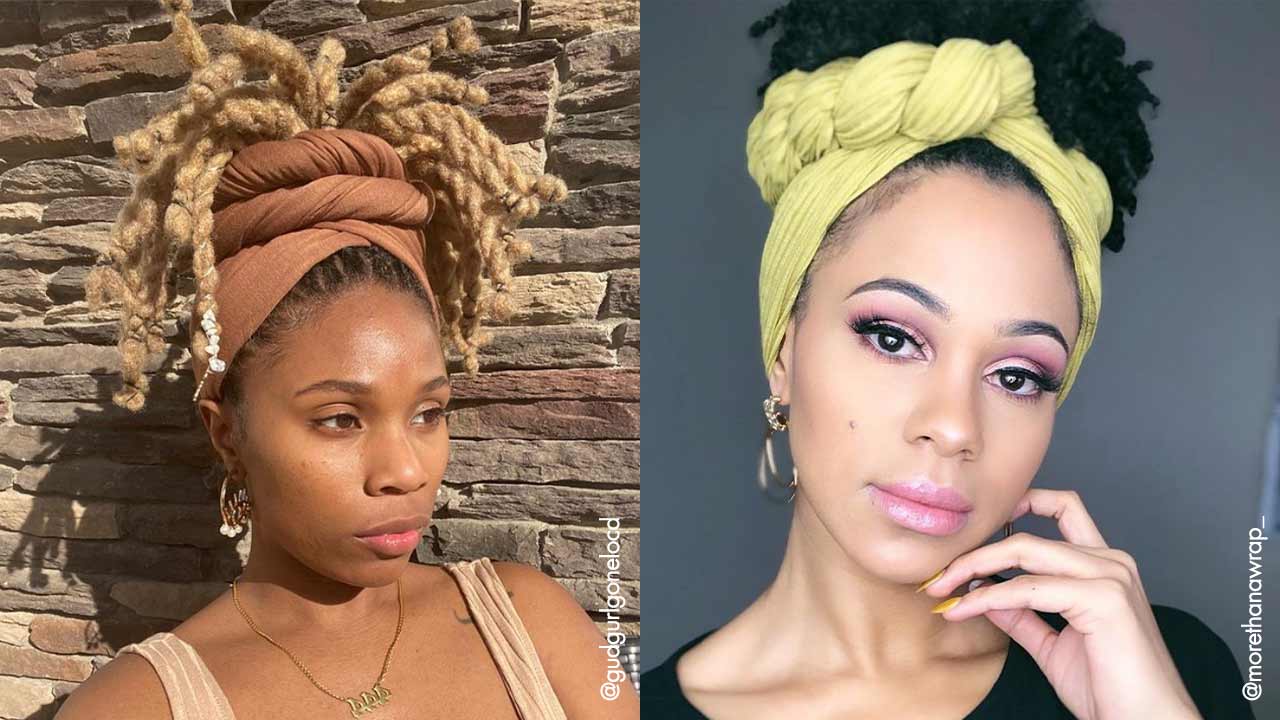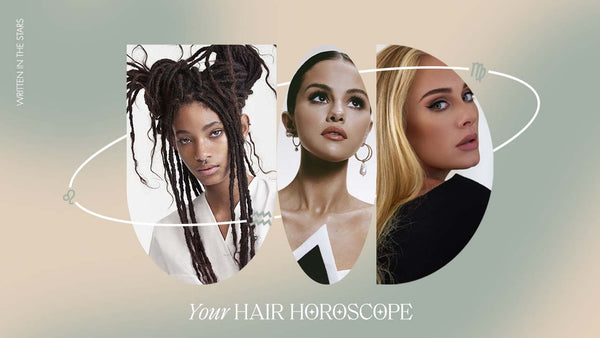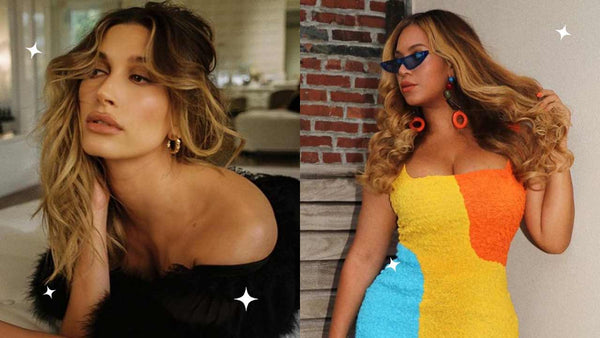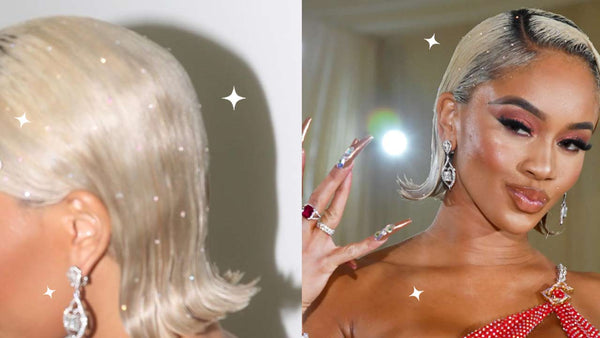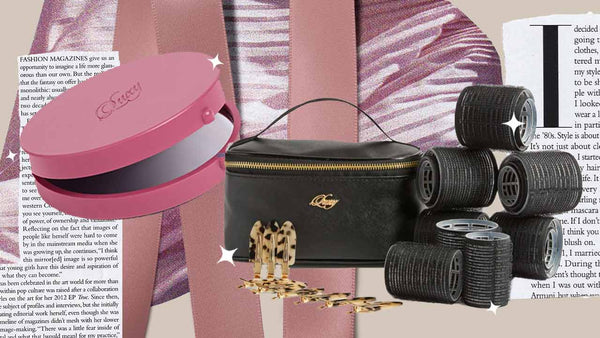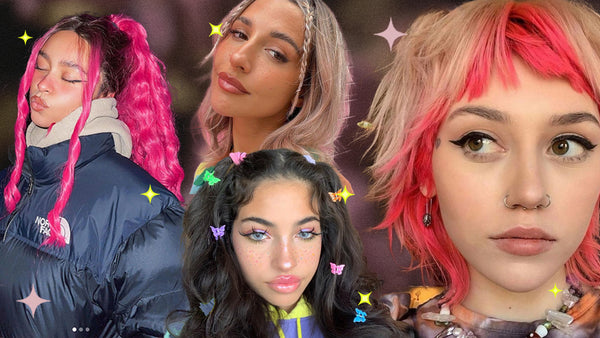What are headwraps?
Headwraps are statement-making accessories and cloth head coverings that garnish the heads of Black women across the globe.
In Ghana, they’re known as dukus. In Nigeria, the Yoruba people refer to them as geles. In South Africa they’re called doeks. In Botswana, headwraps are known as tukwis. But no matter what you call them, headwraps have a rich cultural history originating in Africa. And while headwraps have become trademark accessories in the Black community, they are more than just fashion statements. Headwraps are cultural and spiritual markers of Black women’s history.
The origins of headwraps and their turn from opulence to oppression
Headwraps originated in Sub-Saharan Africa in the early 1700’s. They soon also became prevalent among Nubian queens in Egypt. Depending on the color and pattern, each headwrap held its own distinct meaning. In the beginning of the 18th century, they were designed to communicate a woman’s cultural and familial practices.
For some cultures, wearing a headwrap indicated a high social status. Women also wore them to indicate their marital status, starting when they were engaged to be married. In some tribes married women were expected to wear headwraps when visiting their in-laws as a sign of respect. Others wore headwraps when attending religious gatherings. Some women also wore headwraps to protect themselves from the torrid Sub-Saharan sun.
By the mid-1700s, in the U.S. Antebellum South, enslaved Black women were forced to wear headwraps as a symbol of subservience. In South Carolina, British colonists passed a law in 1735 which mandated that Black people were only allowed to wear specific types of clothing. They were not permitted to wear any kind of ornate clothing, which included festive headwraps.
In 1784 then-Louisiana Governor Esteban Rodriguez Miró, passed the “Edict of Good Government,” a law that required Black women to wear “their hair bound in a kerchief” or a “tignon.” What began as a statement of opulence became a symbol of oppression.
By the 19th century when slavery was abolished following The Civil War, headwraps took yet another turn for the worst when popular advertisements in the U.S. depicted caricatures of Black women donning them which perpetuated the “Black Mammy” stereotype. This stereotype spread a false narrative that Black women only existed to partake in acts of domestic servitude as caretakers and cooks harkening back to the days of slavery.
At this time, Black women would soon begin to abandon headwraps all together due to the association with servitude and slavery.
The evolution of headwraps in style, functionality, and symbolism
In the early 20th century following the invention of chemical relaxers by Madam C.J. Walker, Black women started to embrace headwraps once again. As hair extensions also began to grow in popularity, Black women wore satin-lined headwraps to protect their hair from heat and humidity, particularly in Southern states in the U.S. Soon after, Black men even started to sport headwraps to preserve their hair specifically designed for men known as durags.
How have headwraps been reclaimed and what is their relationship to the natural hair movement?
By the 1990’s, as singers like Erykah Badu and Lauryn Hill celebrated Black womanhood in their anthemic chart-topping hits, they also popularized headwraps among a new generation. In her groundbreaking 2006 anthem “I Am Not My Hair,” R&B songstress India.Arie spoke of the struggles that Black women experience when wearing their natural hair textures, both in the workplace and in casual settings. Thanks to Arie, many Black women found agency in not only wearing their natural hair, but also in honoring their roots by wearing headwraps.
Throughout the 2000’s, Arie continued to revolutionize wearing headwraps in the mainstream media and soon a new crop of celebrities like Lupita Nyong’o, Rihanna and Tracee Ellis Ross would follow suit. Nyong’o famously stole the show when she wore a House of Herrera royal blue and canary yellow strapless gown and $624,000 worth of jewelry, topped off with a royal blue gele headwrap at the 2016 Toronto Film Festival.
As the natural hair movement gained traction in the last decade or so, Black women across the country began donning headwraps atop of braided protective hairstyles to preserve moisture in their hair and simply as a statement asserting their Black identities rooted in Africa.
What do headwraps signify in modern times?
In modern times, headwraps have taken on new meanings while still fundamentally serving as an ode to African roots. Some women wear headwraps when going to bed to protect their hair from cotton pillowcases that cause curly and kinky hair textures to become dry. There isn’t a woman in the world who hasn’t had a bad hair day, but headwraps have also proven to be the perfect remedy for days when you’re sick of styling your hair.
“The head wrap began as a way of saving time, not being bothered to do my hair in any practical way, but also as a kind of … symbol or allegiance with exactly that kind of African ancestry. After all, many, many more women in the world wear something on their heads than don’t, and I like to be part of that sisterhood,” Author Zadie Smith told The Cut in 2017.
Some women also opt to sport a headwrap on days when they are doing heatless styles like twist-outs and perm rods to allow their hair to set underneath while running errands.
African women still wear headwraps when attending cultural festivities such as weddings, baby showers and even funerals. And finally, many women simply wear headwraps to celebrate their African heritage all the while making a fashion statement.
Today, you can find countless YouTube tutorials for step-by-step instructions on how to artfully tie a headwrap. From dukus to geles to doeks to tukwis, there’s no shortage of headwraps to choose from. Headwraps have become so ubiquitous that many Black-owned hair brands sell a plethora of custom-made ones in various patterns, shapes and sizes.
Whether they are worn casually to top off everyday looks, for festive celebrations or on runways and red carpets, headwraps have a detailed cultural history which reveals that they are much more than mere accessories. When Black women started wearing headwraps in 18th century Africa, they did so to assert their Black womanhood and distinguish themselves from one another. While headwraps took on a negative connotation in the colonial U.S., Black women were able to reclaim and rewrite the narrative by sporting them as powerful symbols of self love.
“With black women, women of color, our hair has always been our biggest struggle on how to make it appropriate and safe for our society,” Karla Ferguson, owner of Yeelen Art Gallery told Miami, Florida radio station WLRN in 2015. “With the headwrap, women are really embracing the Africanness within us.”
Written by Ashley Inkumsah
